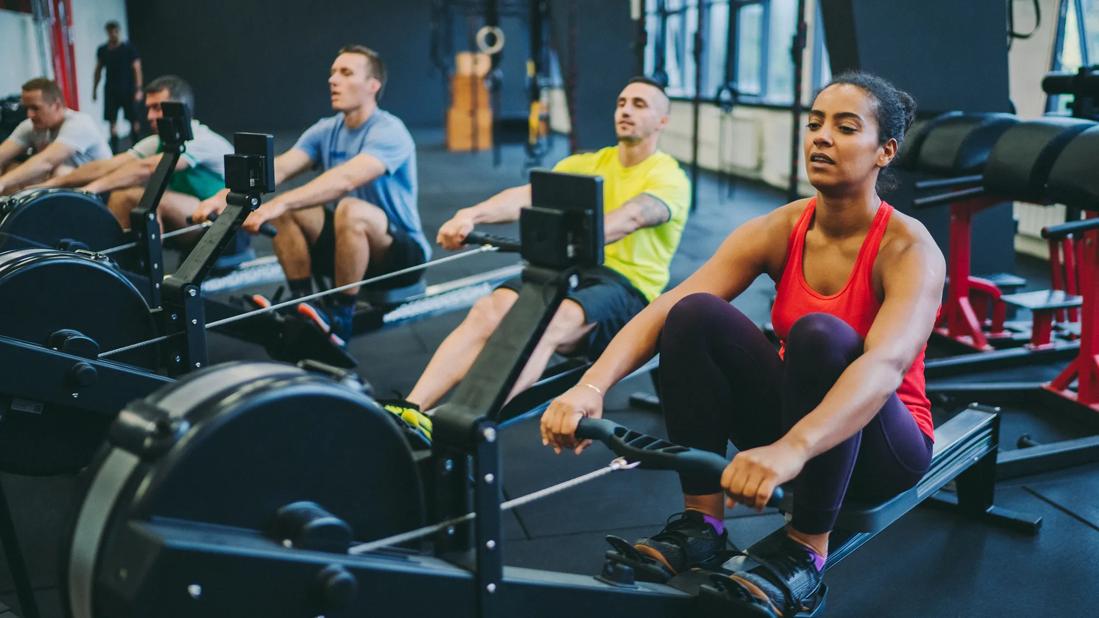7 Types of Low-Impact Cardio Workouts
Activities like swimming, cycling and rowing can get your heart pumping without stressing your joints

Cardio exercise is heart-pounding — but that doesn’t mean it needs to pound on your joints.
Low-impact cardio workouts raise your heart rate and test your lungs without putting as much wear and tear on your body. It’s a way to achieve cardio fitness gains while minimizing the pains, as exercise physiologist Katie Lawton, MEd, explains.
Benefits of low-impact cardio
Cardio exercise (also known as aerobic exercise) strengthens your heart and lungs by working them harder. Low-impact cardio aims to get the same results without punishing your joints in the process.
But don’t think that “low-impact” means easy. The intensity level can be sky high.
“It’s not about effort. You’re still going to be able to push your body,” emphasizes Lawton. “The difference is that low-impact activities are not going to put as much stress on your joints in the process.”
Low-impact cardio can work to:
- Prevent heart disease: Cardio exercise can help improve your overall heart and vascular health by minimizing risk factors related to blood pressure, cholesterol and weight.
- Protect joints: Low-impact exercises are easier on joints like your ankles, knees and hips, making them ideal for people with osteoarthritis or if you’re recovering from injuries.
- Create fitness opportunities: Lower-impact fitness activities are often doable for a wide range of people of different ages and abilities.
- Boost cross-training:Adding low-impact cardio workouts to your workout routine can help you build cardiovascular fitness while limiting injury risk and extra strain on your joints.
- Allow higher-intensity exercise: Dialing up workout intensity levels comes with less injury risk with lower-impact activities.
The American Heart Association recommends getting at least 150 minutes of moderate-intensity cardio exercise every week to keep your heart healthy. Going beyond that minimum can lower your risk of heart disease (and early death) even more, research shows.
Low-impact cardio workouts
So, what exercises qualify as low-impact cardio? Any of the following activities can get your heart rate pumping while going easier on your joints.
1. Swimming
The buoyancy of water, which allows you to float, works to reduce the effect of your body weight on your joints. “There’s just not as much pounding on your joints when you’re in water,” says Lawton. “It’s almost a zero-impact type of cardiovascular exercise.”
Swimming or water exercise is particularly helpful if you’re experiencing joint pain or stiffness, which can come from:
- Arthritis
- Fibromyalgia
- Obesity and overweight
- Pregnancy
- Reduced mobility from conditions like muscular dystrophy, cerebral palsy or multiple sclerosis
2. Cycling
Sitting on a bike seat and pedaling away keeps your weight off your feet, which minimizes the stress placed on your lower joints. “It makes a big difference when your feet aren’t on the ground,” notes Lawton.
The low-impact nature of cycling is why it’s often recommended while recovering from injuries to maintain muscle strength and cardio fitness.
3. Rowing
Exercising from a seated position on a rowing machine offers definite perks when it comes to limiting stress on your joints.
“Not being in an upright position really takes pressure off your body,” emphasizes Lawton.
4. Elliptical workouts
Smooth-moving elliptical machines protect your joints against jarring forces.
“You’re gliding instead of stepping up and down, which takes away that moment of impact when your feet touch down running or walking,” explains Lawton.
5. Vertical climbers
Towering vertical climbing machines are engineered to reduce the strain on your body as you mimic mountain climbing in a rhythmic motion using your legs and arms.
“It’s considered almost a zero-impact cardio exercise for your joints,” says Lawton.
6. Walking
Since your feet hit the ground, walking puts some stress on your ankles, knees and hips — but it’s A LOT less than the abuse your joints take while running. “It doesn’t have that jarring effect,” explains Lawton.
The slower pace of walking (compared to running) makes the activity doable for a wider group of people, too.
If you want to up the intensity level, walking inclines can boost the cardio component.
7. Hiking
Consider this the in-the-wild cousin of walking, with the same general benefits, plus the perks of traveling through more natural settings. Hiking on softer trail surfaces also puts less strain on your joints.
Does low-impact cardio deliver the same results as high-impact cardio?
It’s absolutely can! It all comes down to how you push yourself during the activity.
“If you’re cycling or on a rowing, elliptical or climbing machine, you can send your heart rate through the roof if you go hard enough,” says Lawton. “The only real difference is in what your joints go through.”